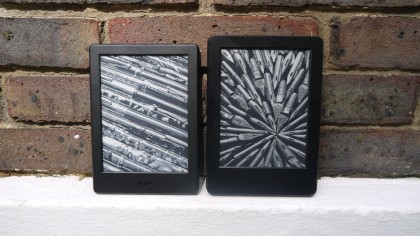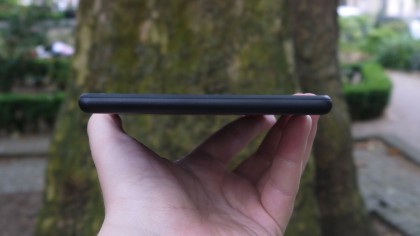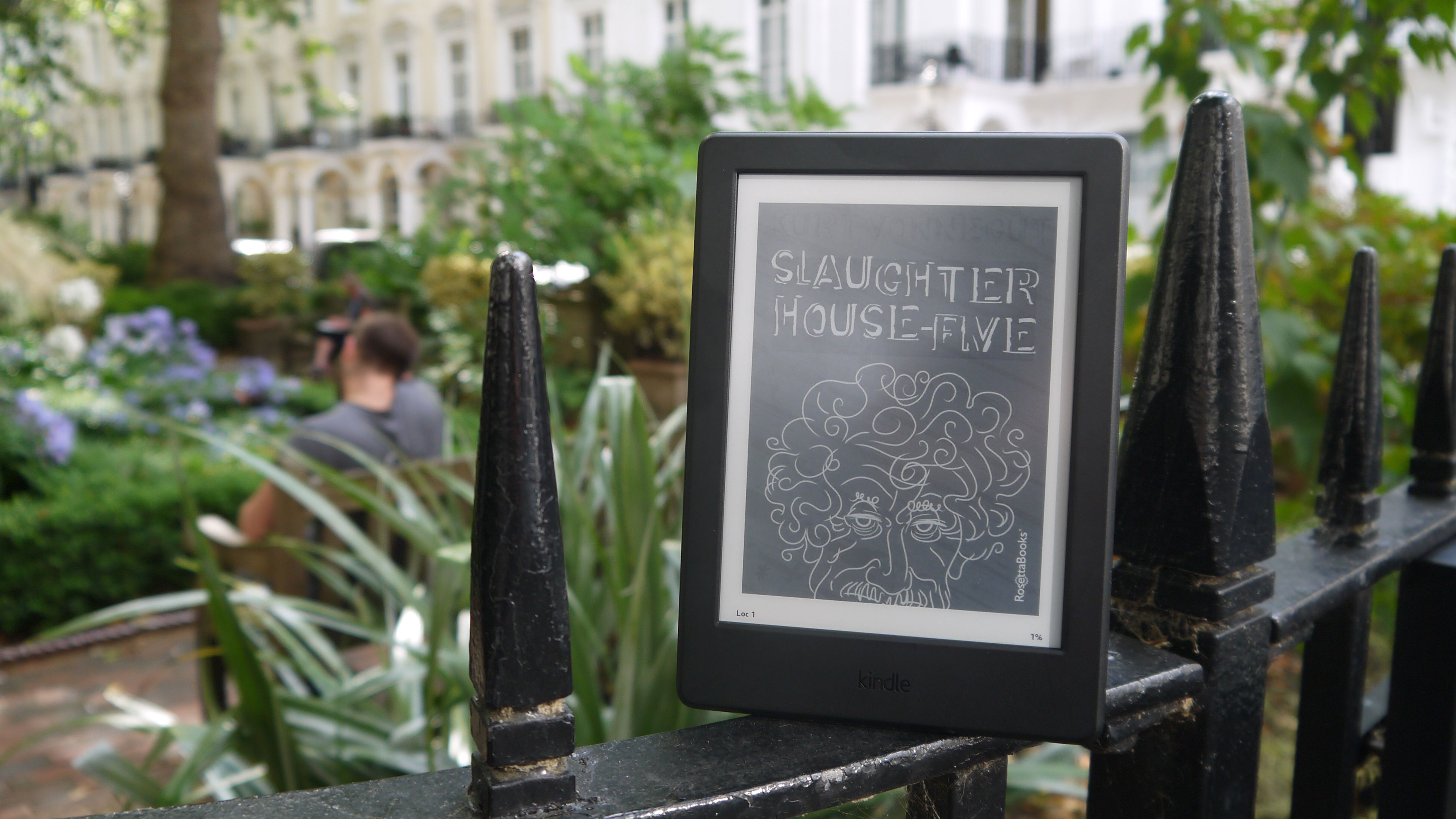TechRadar Verdict
The 2016 version of the Amazon Kindle improved the design and its internals to make it the best affordable ereader even better. Since then we've seen a revamped Kindle, but if you can find this for less it's still well worth considering.
Pros
- +
Improved design
- +
Affordable
- +
Increased storage
Cons
- -
No backlight
- -
Screen could be better
- -
Low price
Why you can trust TechRadar
Update: The latest version of the Kindle now comes with a back light built-in. You can read our full Amazon Kindle review for the updated model from the ereader giant. Below you'll find our review of the older model released back in 2016.
Even though industry insiders keep telling us that the popularity of ebooks is waning, Amazon is still the undisputed champion of the ereader market, and its cheapest Kindle model is one of the best-selling ebook readers on the whole planet.
This 2016 model is the eighth generation of Amazon's entry-level Kindle and as of 2018 is still the most recent. We gave the 2014 seventh-generation Kindle a generally positive review, and this latest version sees the design revised once more, as well as adding some new features.
The 2016 Kindle launched at £59.99/$79.99 (about AU$105) if you bought it 'With Special Offers' – meaning that adverts come up on the lock screen – or £69.99/$99.99 (about AU$130) if you don't want to see any promotions.
This older Kindle has now been discounted since the launch of the new Amazon Kindle that was launched in April 2019 and is well worth considering in your hunt for a new ereader.

There are more exciting, bell and whistle-packed ereaders out there, like Amazon's Kindle Oasis, Kindle Paperwhite, or the discontinued Kindle Voyage. But the basic Kindle has long been the go-to device if you're looking for a straightforward reading experience without spending too much money.
But is the original ereader still the best basic option out there? And if you have the 2014 model, is it worth upgrading?
Sign up for breaking news, reviews, opinion, top tech deals, and more.

- Take a look at our Best Kindle round-up
Design
The design is the major change from previous versions of the Amazon Kindle – the Kindle Fire-like design has been dropped in favor of something a little sleeker, and this Kindle is slimmer, lighter and shorter than ever before.

The bezels are a little thinner, making the device feel much more compact, and easier to hold in one hand. It's 16% lighter than the Kindle that went before it, and a whole 1.5mm slimmer as well.
The Kindle doesn't feel premium to the touch though – for that you'll need to upgrade to the Oasis or Voyage, which are the most expensive models in the Kindle line.

Here you've got a simple black box with rounded corners. It's not thrilling, but it does the job.

The back is plastic, with the Amazon logo emblazoned on it. This can pick up fingerprints quite easily and is a grease magnet, but if you keep your digits clean it won't be an issue.
The four corners of the Kindle feel rounder and easier to hold than on previous iterations, which makes the whole reading experience much more comfortable – remember, you could be holding this device for quite some time.

You'll have a more comfortable experience with the premium Oasis model – it's slimmer on one side to make it easy to hold in one hand – but the Kindle is now so compact that it's easy enough to use one-handed.
You may find it fiddly to hit the sleep button at the bottom of the device, but then you won't be switching your Kindle on and off that often, so it's hardly an issue.
Key features
Amazon has doubled the storage capacity on its basic model to 4GB – not that storage is really an issue with Kindles, as you can literally store thousands of books on your device, and if there's not enough room the others will be kept in Amazon's cloud storage.
You can then access them via your Wi-Fi connection, but if you're planning on living in a cave for a few months – or you're just go on holiday and can't rely on having web access – you'll need to make sure you have all the books you want to read stored locally.
From 2018, Amazon made a big, notable update to most of its Kindle range: Audible integration. Now with Audible you have access to more than 200,000 audio titles. You can pair your Kindle with any Bluetooth headphones or speakers to take the story you're reading to your ears instead, which is a really great, seamless experience.

Just bear in mind that if you're looking to jump ship from either Nook or Kobo you won't be able to transfer your purchases to Kindle, so you may want to consider the added cost of re-purchasing some of your favorite reads before making the switch.
Nook is also no longer available in the UK, which means customers no longer have access to the Barnes and Noble ebook store, and so have even more reason to switch.
Amazon is highlighting how the Kindle runs faster than the previous version. It comes with 512MB or RAM rather than 256MB, and while that might not sound like much when some phones now sport 6GB of RAM, there's a lot less to power here, and the slight upgrade has given the Kindle a noticeable jolt in terms of speed.
Compared to the 2014 model, this version does show a slight speed advance when downloading and opening books. Page flipping is noticeably faster – the faster you can turn the page with e-ink technology the better, as all those fractions of a second waiting for the next page to appear add up.
Image Credit: TechRadar

James is the Editor-in-Chief at Android Police. Previously, he was Senior Phones Editor for TechRadar, and he has covered smartphones and the mobile space for the best part of a decade bringing you news on all the big announcements from top manufacturers making mobile phones and other portable gadgets. James is often testing out and reviewing the latest and greatest mobile phones, smartwatches, tablets, virtual reality headsets, fitness trackers and more. He once fell over.
